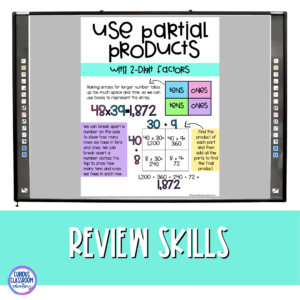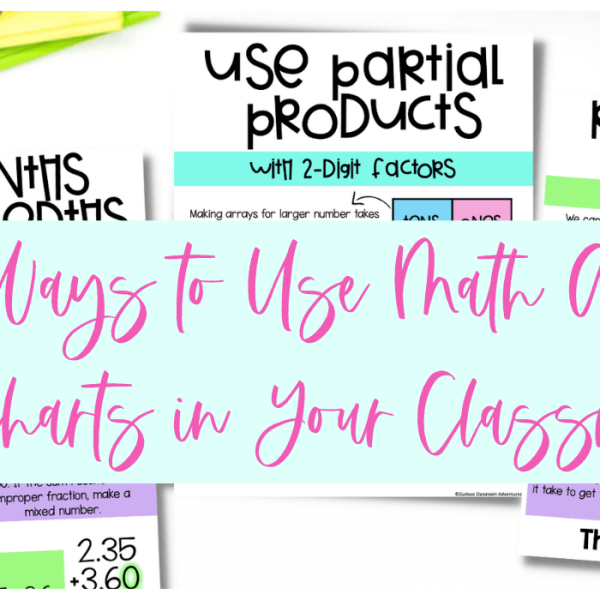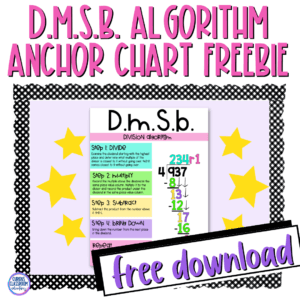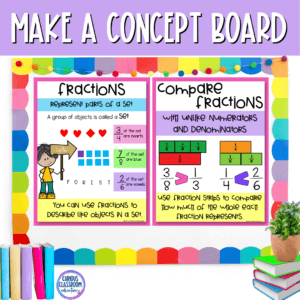Math Anchor charts are visual aids used to remind students of key concepts and strategies. When it comes to teaching math, there are a lot of different strategies to use in order to help students learn and review various skills. But math anchor charts are particularly helpful for making concepts stick. Here are 5 ways that you can use anchor charts in your math classroom to help students learn and review skills.
1. Introduce a new concept
When you introduce a new concept, create or display a pre-made anchor chart for your students. This will help them to remember what they need to do in order to complete the task. For example, if you are introducing long division, create an anchor chart with the steps that students need to follow. You can also include an example or two on the chart. Show students how to refer back to the charts if they get stuck. I’ve included my long division anchor chart as a free download. Grab it here! Pro Tip: If you are using a pre-made anchor chart from a PDF you can print it as a larger item. Just choose the “poster” setting from your printer menu.
2. Use math anchor charts as support during extra practice
If you want to review a skill with your students, print your anchor charts as standard 8.5×11 pages and leave them at a math station. Pair them with a set of math task cards for that particular skill. Then students can review the skill using the math anchor chart as they work on applying that same skill while solving the problems on the cards. This will help students to remember what they need to do when working through a particular skill.
3. Review a skill
Leading up to a test, display a digital anchor chart on the board. Use the hiding tools or shapes to cover up some of the keywords or information. Lead students in reviewing by having them work together to fill in the missing words and numbers. If you find that some of your students are struggling with a certain concept or skill, provide extra practice by having them create their own anchor charts. This will help them to better understand the concept as they are creating their own visual aid for it.
4. Make a concept board with math anchor charts
Print all the anchor charts about one topic, such as fractions, in 8.5 x 11 and hang them up on your classroom bulletin board to create a concept wall. This will be especially helpful for those students who need a little extra reminder about how to do something from time to time. It will also help them see how skills within that topic are related to one another.
5. Send them home
If you have parents who are willing to help their children with their math homework, send the anchor charts home with them so that they can use them as a reference as well. This is a great way for parents to be involved in their child’s learning and for children to get extra practice at home! The perfect way to do this is to set your printer to “2 pages per sheet” so that the charts shrink to just the right size to be glued inside a composition notebook.
Math Anchor charts are a great way to introduce new concepts, review skills, provide extra practice, and serve as a reference for both students and parents alike. So next time you are teaching math, try using a math anchor chart or two in order to help your students master the material in no time!




